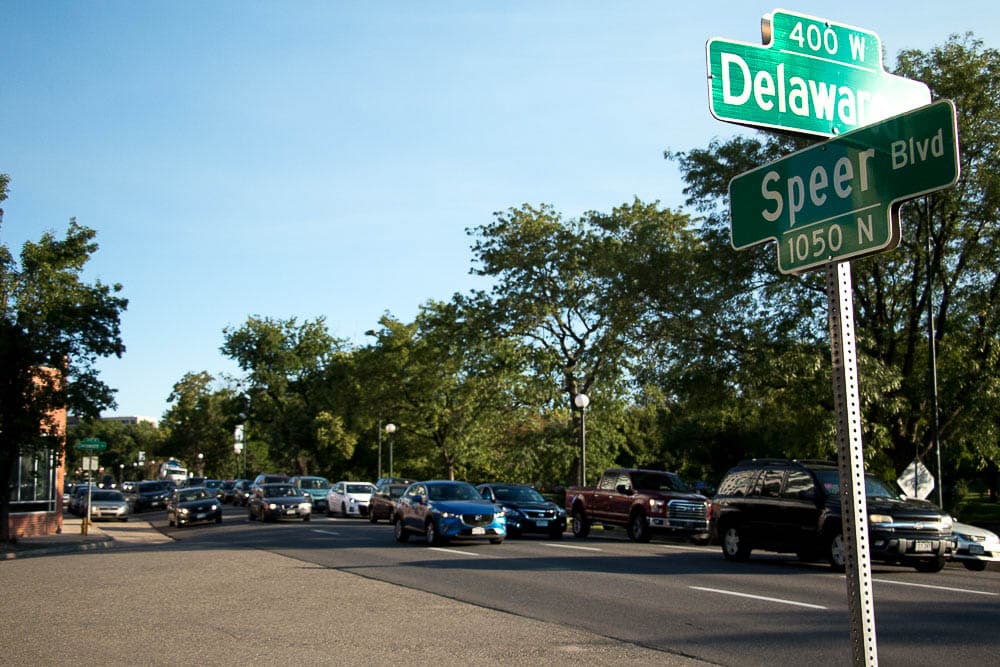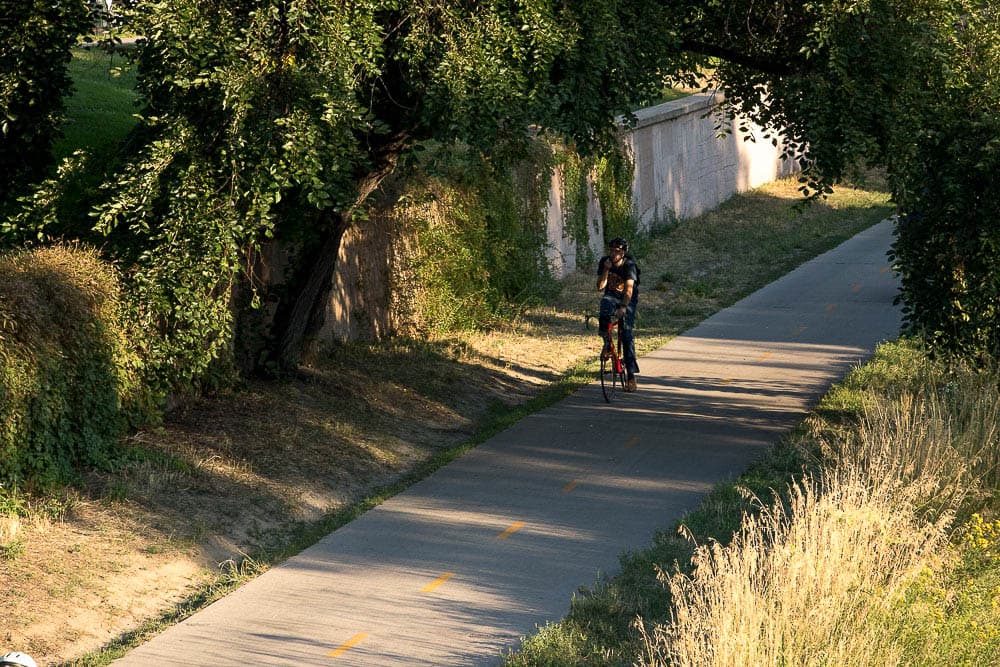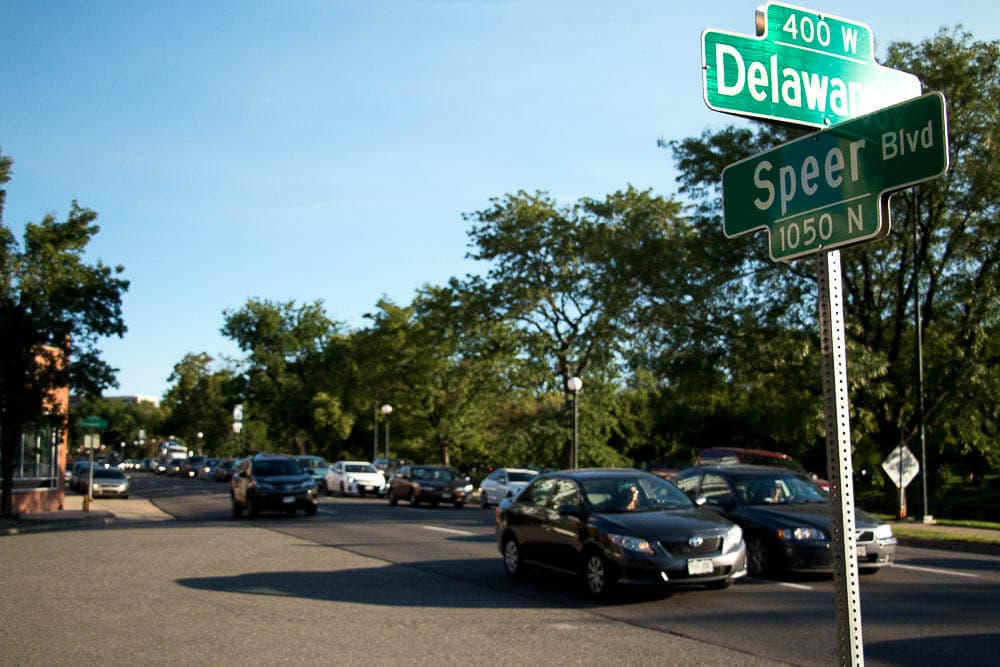Denverite invites thoughtful people to submit op-eds about Denver. This is the first in a series we're launching called One Big, Crazy Denver Idea.

By Chris Jones
The Cherry Creek Trail is an amazing pedestrian and bike corridor leading from the Cherry Creek Reservoir all the way into downtown Denver.
Speer Boulevard is an eight-lane highway that cuts off this resource from the city and provides hidden areas for illicit drug use. Four lanes of traffic on either side make the space entirely unpleasant, and what green space there is exists only in thin strips between infrastructure.
Removing the two-mile-long section of Speer Boulevard between Colfax and Downing would convert 20 acres of asphalt to parkland. Combined with the 30 acres of open space in the median, this brings the total usable space from essentially zero acres to 50. It would be a collection of block-long street-level parks connected by the below-grade bike path and river channel.
River health
The current walled channel is 80 feet wide while the Speer right-of-way is closer to 250 feet.
Removing the roadbed would provide space to open up the channel and allow for a more natural riparian environment. Native grasses and groves of trees and maybe even a small wetland or two would significantly increase biodiversity. The increase in unpaved greenspace would also reduce runoff by allowing water to seep directly into the ground.
Traffic
Speer provides the quickest route for many suburbanites to get downtown, but it also bullies its way through the street grid, severely disrupting cross traffic and separating neighborhoods.
Removing Speer and building out the grid would result in a net reduction of 13 intersections. It would connect neighborhoods not only for cars, but for cyclists and pedestrians as well. And it may not be as bad for traffic as you think — when NYC removed vehicle traffic from Broadway (which also cuts through the grid) traffic flow in the area measurably improved.

The former roadbed would also be a prime location for a long-overdue streetcar (park-car?) from downtown to the Cherry Creek neighborhood. It could even use the existing vehicle tunnel under Broadway and Sixth.
Access
Four parks line Speer boulevard but are separated from Cherry Creek by traffic: The Sunken Gardens Park, Zeckendorf Plaza Park, Hungarian Freedom Park and Alamo Placita Park. This brings the total to just shy of 70 acres of contiguous urban park space.
Steps and platforms could lead people down to the water and invite them to stay. There is plenty of space for playgrounds and dog parks, as well as for more natural areas of reeds and frogs. Adjacent property values would go up. It would feel safe and open instead of isolated and sketchy.
Removing Speer Boulevard is not something that is going to happen any time soon. But maybe someday, when driverless cars ease congestion and transit use is more widespread, we can have a serene park environment where once there were only stop lights and road rage.

Chris Jones is an urbanist and filmmaker currently living in Denver who makes videos. Check out them out here.
Denverite invites thoughtful people to submit op-eds about Denver. This series is called One Big, Crazy Denver Idea. We're also launching our What I've Learned series this week. Pitch your op-ed to us at [email protected].













